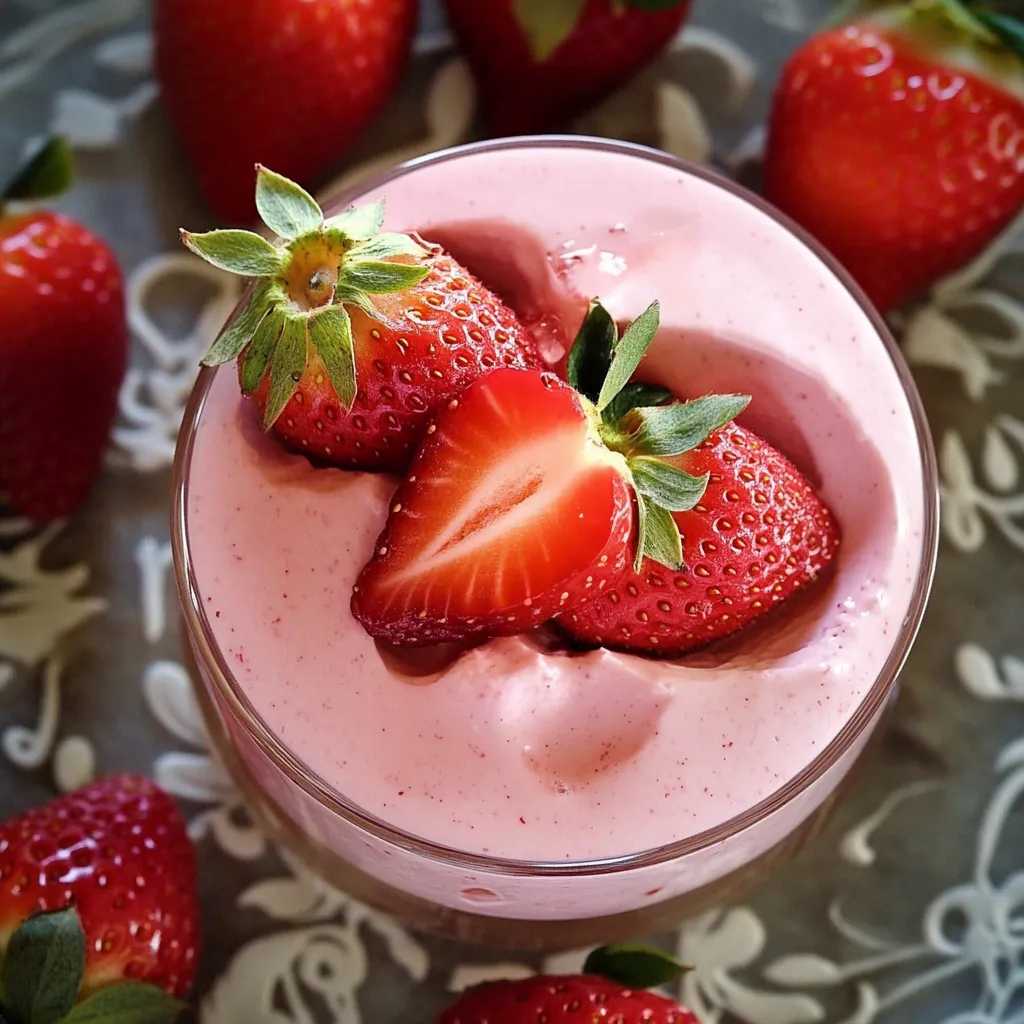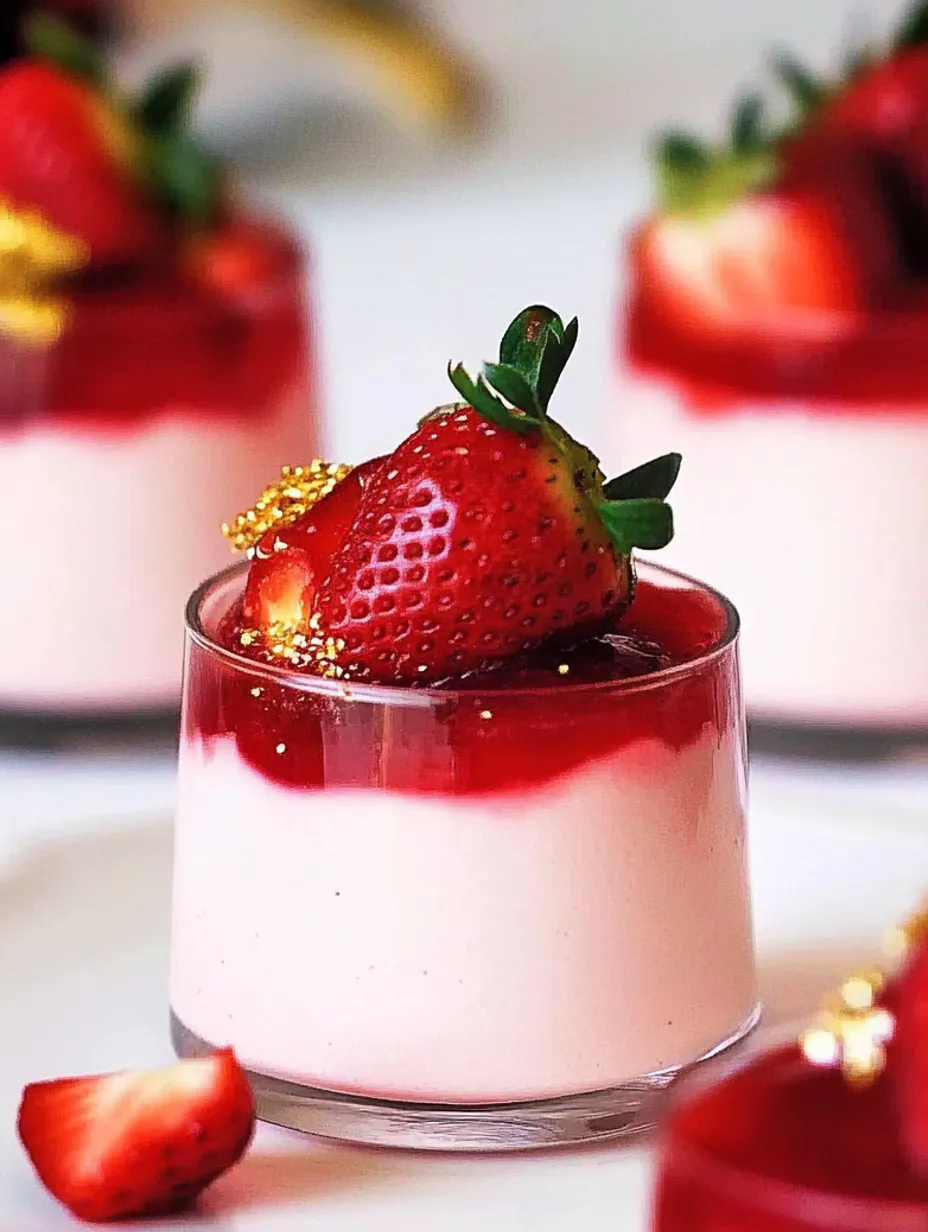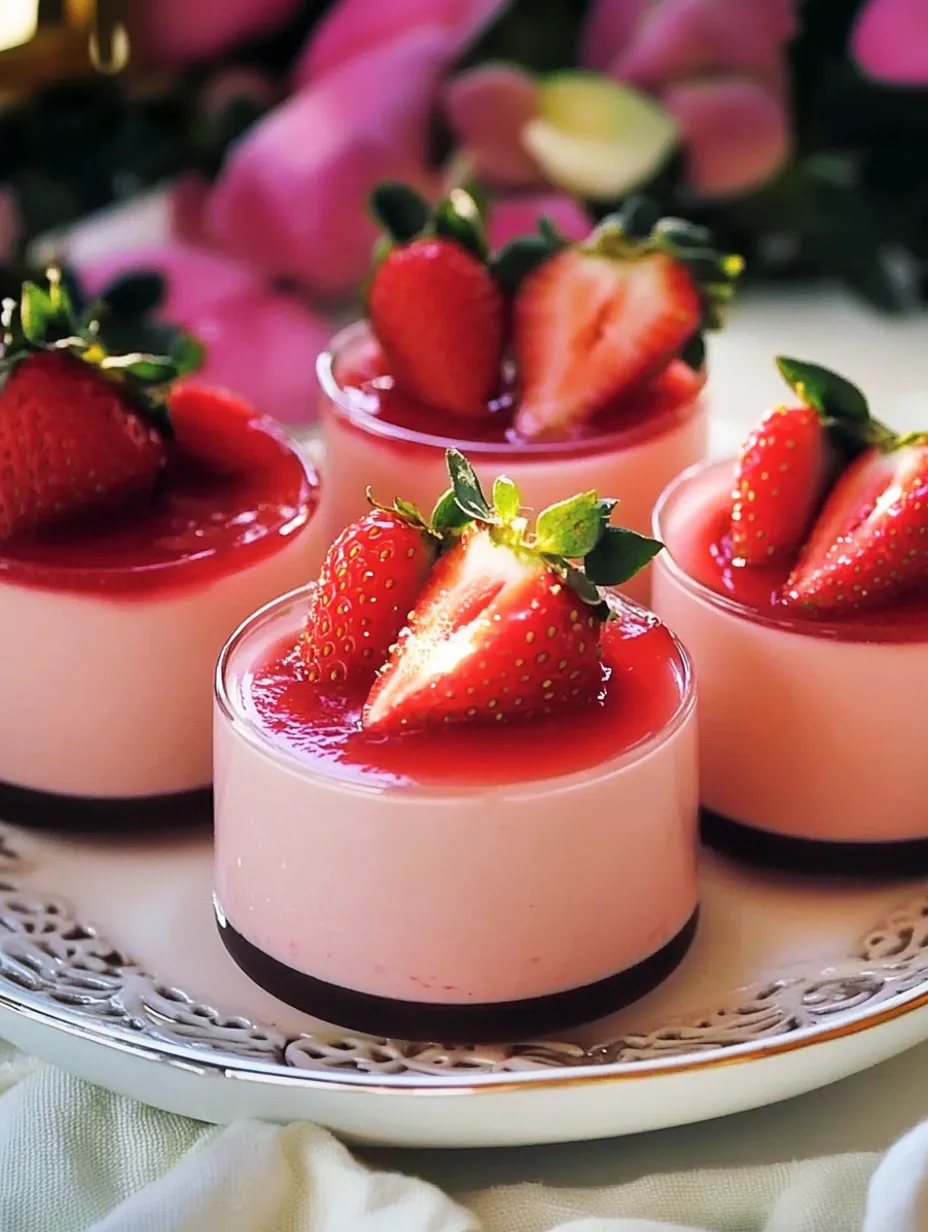 Pin it
Pin it
I've always thought good strawberry mousse should taste like biting into the perfect summer strawberry—sweet, vibrant, and bursting with fresh flavor—but with a cloud-like texture that simply melts away on your tongue. After years of disappointing restaurant versions that were either too sweet, too firm, or worst of all, made with artificial flavoring, I finally perfected this recipe. The secret is using fresh strawberries, just enough gelatin to hold its shape without becoming rubbery, and the magical combination of both whipped cream and Italian meringue for that truly ethereal texture that seems to float on your spoon.
I first served this at my sister's bridal shower, and one guest actually closed her eyes and sighed after the first spoonful. Three people asked for the recipe before dessert was even finished! What I love most is how versatile it is—elegant enough for a dinner party in individual glasses, but it can also form the filling for a spectacular layer cake for special occasions.
Perfect Ingredients
Berry SelectionFresh strawberries give the most vibrant flavor, but frozen work in a pinch if thawed and drained well. Look for fully ripe, fragrant berries—the redder throughout, the better the flavor will be. Local, in-season strawberries make an enormous difference in flavor intensity. Even slightly underripe berries can work beautifully here—the sugar in the recipe helps balance any tartness.
Gelatin GuidanceGelatin sheets (gold or platinum grade) produce the silkiest texture if available. Standard powdered gelatin works perfectly fine with proper blooming. The correct amount is crucial—too much creates a bouncy, jello-like consistency, too little and it won't hold shape. Always bloom in cold water to ensure proper activation and melting.
Cream ConsiderationsHeavy cream or heavy whipping cream with at least 36% fat content gives the best stability. Ultra-pasteurized cream will work but doesn't whip quite as well as regular pasteurized. The cream must be very cold to achieve maximum volume. Whipping to stiff peaks is essential for the mousse's structure—soft peaks will result in a looser final product.
After experimenting with countless versions, I've found that adding just a tiny splash of lemon juice to the strawberry puree makes a remarkable difference—it doesn't make the mousse taste lemony, but it brightens the strawberry flavor and helps maintain that beautiful rosy color. It's the small details that transform a good dessert into an exceptional one.
 Pin it
Pin it
Detailed Method
Gelatin PreparationBegin by properly blooming your gelatin—this step is crucial for smooth texture. For powdered gelatin, sprinkle evenly over cold water (never hot) in a small bowl, using about 4-5 times the amount of water to gelatin. Allow to sit undisturbed for a full 10 minutes until completely absorbed and swollen. For gelatin sheets, submerge in a bowl of ice-cold water until soft and pliable, about 5-10 minutes. When ready to use, lift sheets from water and squeeze gently between your fingers to remove excess moisture before adding to warm puree.
Strawberry ProcessingWash berries thoroughly and remove stems. For the most vibrant color and flavor, trim away the white shoulder at the top of each berry. Cut into small chunks to help them break down more easily, then process in a food processor or blender until completely smooth. Pass through a fine-mesh strainer to remove seeds, pressing gently with a rubber spatula to extract all the puree without forcing seeds through. This step seems fussy but makes the difference between a silky mousse and one with distracting seeds.
Gelatin ActivationHeat approximately one-third of your strawberry puree in a small saucepan until warm (122-140°F), but not boiling—excessive heat destroys gelatin's setting properties. Add bloomed gelatin to warm puree, stirring constantly until completely dissolved. To check, lift your spoon and look at the liquid dripping off—you should see no visible particles. Combine with remaining cold puree and stir in lemon juice. Allow mixture to cool to room temperature before proceeding; if it begins to thicken too much, warm very gently while stirring.
I discovered through trial and error that allowing the gelatin mixture to cool to precisely the right temperature before folding in the whipped cream and meringue is absolutely critical. Too warm and it deflates the airiness; too cold and you get unpleasant lumps of set gelatin throughout. I aim for just slightly cool to the touch—around 75°F if you have a thermometer.
Crucial Components
Italian Meringue MagicPrepare your Italian meringue by combining sugar and water in a small, clean saucepan. Heat without stirring until it reaches exactly 244-246°F on a candy thermometer. Meanwhile, whip room-temperature egg whites until foamy, then increase speed as syrup approaches target temperature. When syrup is ready, pour in a thin stream down the side of the bowl while continuing to whip at high speed. The hot syrup essentially cooks the egg whites while incorporating air, creating a stable, glossy meringue that won't weep or deflate. Continue whipping until the bowl feels barely warm to the touch.
Whipped Cream WisdomFor perfect whipped cream, start with everything cold—the cream, the bowl, even the beaters if possible. Whip on medium-high speed until it reaches stiff peaks that stand upright when the beater is lifted. The cream should be firm enough to hold its shape but still look smooth and creamy, not grainy or butter-like. If preparing in advance, slightly under-whip, as it will continue to firm up in the refrigerator and may need a quick re-whip before folding into the mousse.
Final Assembly FinesseThe folding technique is what preserves all the air you've worked to incorporate. Start by gently combining the meringue and whipped cream with a large rubber spatula, cutting through the center and sweeping around and under in a figure-eight motion. When mostly combined, add the strawberry mixture in two additions, continuing the gentle folding motion. For the final strokes, use a light hand to ensure no streaks remain while maintaining maximum volume. Work efficiently but without rushing—the gelatin will begin setting, and you want to portion the mousse while it's still fluid.
I used to struggle with lumpy mousse until I learned to use a large whisk for the initial combination of the strawberry mixture with the cream and meringue. The whisk cuts through everything more efficiently than a spatula, then I switch to a spatula for the final, gentlest folds. This hybrid approach gives me perfectly smooth mousse every time.
My first attempt at this mousse was a disaster because I rushed and didn't let my gelatin bloom properly. I ended up with unpleasant chewy bits throughout an otherwise lovely dessert. Now I set a timer for the full 10 minutes of blooming time, no matter how impatient I'm feeling. Proper technique really does make or break this delicate dessert.
Strawberry Sauce Simplicity
The optional strawberry sauce elevates this dessert from wonderful to extraordinary. In a small saucepan, combine pureed strawberries (strained if you prefer, though I enjoy the textural contrast of the seeds in the sauce) with just enough sugar to enhance without overwhelming—about one tablespoon per cup of puree. Add a few drops of lemon juice and simmer gently until slightly thickened and syrupy, about 5-8 minutes. Let cool completely before serving drizzled over the set mousse.
For special occasions, I create a stunning visual by placing the sauce in a squeeze bottle and making artistic patterns on dessert plates before adding the mousse. The vibrant red against the pale pink creates a beautiful contrast that makes guests feel like they're dining at a fine restaurant.
Presentation Possibilities
The versatility of this mousse means you can present it in countless ways. For casual family dinners, simple glass dishes or ramekins work beautifully. For elegant dinner parties, consider serving in champagne coupes or martini glasses with a fresh strawberry garnish. The mousse also works wonderfully as a cake filling—stabilized enough to hold up between layers without squishing out the sides.
My favorite presentation combines textures by adding a thin layer of crushed graham crackers or shortbread at the bottom of each serving glass, then a layer of diced fresh strawberries, followed by the mousse and topped with the sauce. The contrast of crisp, fresh, and ethereal creates a dessert experience that delights with every spoonful.
 Pin it
Pin it
Chef's Notes
Temperature Control: Every step of this recipe benefits from careful temperature management—cold ingredients for whipping, proper cooling of the puree, and correct syrup temperature for the meringue. Visual Cues: Trust your eyes and hands more than strict timing—properly whipped cream should form sharp peaks that just barely curl at the tip; Italian meringue should be glossy and form stiff, straight peaks. Gelatin Wisdom: Different brands and forms of gelatin have varying strengths (bloom ratings). If your mousse comes out too firm or too soft, adjust accordingly next time by decreasing or increasing the gelatin by small increments.
Making this strawberry mousse has taught me that patience and attention to detail are what transform good desserts into memorable experiences. The careful balance of techniques—the proper blooming of gelatin, the precise cooking of sugar syrup, the gentle folding to preserve air—all come together to create something that seems simple but delivers complex pleasure. Whether you're looking to impress guests or simply treat yourself to something special, this mousse delivers a taste of summer sunshine in every ethereal spoonful.
Frequently Asked Questions
- → Can I use frozen strawberries instead of fresh?
- Yes, but thaw them completely and drain excess liquid before pureeing. The flavor may be slightly less vibrant than with fresh berries.
- → Why do I need to strain the strawberry puree?
- Straining removes the seeds for a silky-smooth texture in the finished mousse. Don't skip this step for the best results.
- → Can I make this mousse ahead of time?
- Absolutely! It's perfect for making 1-2 days ahead. Store covered in the refrigerator, and add the sauce just before serving.
- → What can I substitute for the egg whites?
- For a no-egg version, you can try using aquafaba (chickpea liquid) or omit the meringue and use additional whipped cream, though the texture will be different.
- → Why isn't my mousse setting properly?
- This is usually because the gelatin wasn't fully dissolved, or the mixture was too warm when assembled. Make sure to melt the gelatin completely and let the mixture cool before folding in other components.
